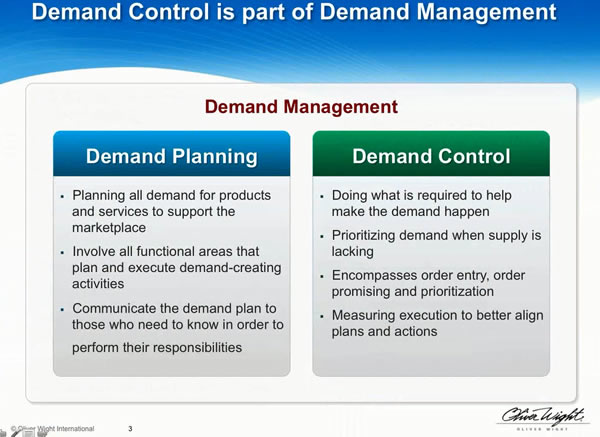How to Leverage Forecasting and a Demand Control Process to Improve Customer Service
Recorded Thursday, January 28, 2016
Best practice demand management emphasizes the importance of an extended planning horizon (typically 24 months) wherein multiple assumptions are reviewed, tested, documented and updated. This process lends itself to consensus discussions for creating a demand plan which incorporates the statistical forecast and multiple inputs—from customers, sales, marketing, product management and strategy—to reinforce ownership and accountability, and improve accuracy and credibility.
But, as all business forecasters know, there will be times when short-term demand or supply develops differently than planned. Significant variances can become a major distraction and often result in time-consuming exercises to “close the gap.” So, how can your organization free itself from these fire drills? The solution is to implement a consistent demand control process for efficiently managing the short-term that allows you to continue to refine your long-term demand plan.
In this educational, one-hour webcast, learn from experts Timm Reiher and Todd Ferguson, Principals at Oliver Wight, who will discuss how to generate a multiple-view demand plan using forecasting software and decision trees. They will explain how to:
-
- Create a statistical forecast and blend this “baseline” view with other inputs
-
- Document assumptions used in the demand planning process to facilitate and drive improved decision-making in the near term and
-
- Integrate insights gained from a demand control process into the long term demand plan for improved long term execution.
Speakers:
 |
 |
|
| Todd Ferguson | Timm Reiher |

